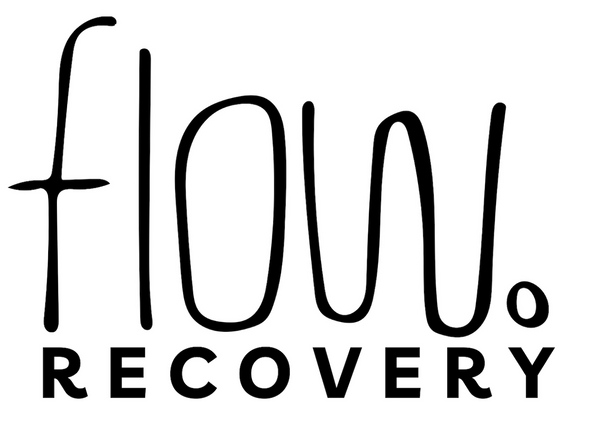Ice baths have made a serious comeback in the world of wellness and recovery. Once reserved for elite athletes, they are now embraced by everyday individuals looking to reduce soreness, improve focus, and sleep better.
But as more people take the plunge, one question keeps popping up: how long should you stay in an ice bath?
In this guide, we walk you through safe and effective cold exposure practices whether you're brand new or already experienced. From timing tips to recovery benefits, here's everything you need to know.
Starting Out: Beginner Ice Bath Timing and Tips
If you're just beginning your cold therapy journey, take it slow. Start with water that is cool, not icy. Cold tap water can be enough at first. Aim for two to three minutes per session and focus on steady breathing.
You do not need a complicated setup to get started. A simple and effective option like the Flow Recovery portable ice bath gives you full control at home, making the process approachable and safe.
A few things to keep in mind when starting:
- Never rush to increase your time
- Avoid holding your breath
- Step out if you feel lightheaded or overly uncomfortable
With consistency, you will build both physical tolerance and mental resilience.

Intermediate Level: When You’re Ready to Go Further
Once you are comfortable with basic sessions, you can gradually increase your time to five to eight minutes. This range allows your body to experience the deeper effects of cold immersion, like reduced delayed onset muscle soreness and improved circulation.
At this stage, consider adding a few ice cubes to your water or dipping in during cooler weather. Keep listening to your body and always warm up gently after your session. Staying mindful helps you stay safe and benefit more over time.
Advanced Ice Baths: Training at the Pro Level
For advanced users who have built up a strong tolerance, ice baths can be extended to ten to fifteen minutes.
This level of exposure may enhance metabolic response and reduce systemic inflammation, but it should only be attempted with experience and a clear understanding of your limits.
It is important to note that longer does not always mean better. Going beyond your body’s comfort zone can increase risk and discomfort. What matters most is consistency and control, not endurance.
What Do Ice Baths Do for the Body?
Its important to understand what do ice baths do for your body. When you immerse yourself in cold water, your blood vessels constrict, helping to reduce inflammation and muscle soreness.
Cold exposure also activates the nervous system, triggering a release of endorphins and dopamine, which can support mental clarity, boost mood, and reduce stress.
That chill you feel? It is your body responding to something powerful. And if done correctly, the benefits go well beyond just physical recovery.
How Often Should You Take Ice Baths
You do not need to plunge every day to feel the benefits. In fact, moderation is often more effective.
For most people, three to five times per week is an ideal range to promote recovery, reduce muscle soreness, lower stress, and support better sleep.
The right frequency depends on your goals. Athletes may use ice baths more regularly during periods of intense training, while others might find value in using them after workouts or on stressful days for a mental reset.
Consistency is key. It is less about how extreme each session is and more about building a steady habit over time.
The convenience of the ice baths with chiller makes that consistency easier. With a setup that takes minutes and fits into any space, you can make cold therapy part of your regular wellness routine.
Some people prefer to plunge in the morning for a refreshing energy boost and mental clarity, while others use it after exercise to speed up recovery.
You can experiment and discover what works best for your schedule and your body.
Avoid These Common Ice Bath Mistakes
While cold exposure offers many benefits, getting it wrong can lead to discomfort or reduced effectiveness. If you are new to ice baths, it is important to ease in gradually and avoid some common missteps.
Here are a few mistakes to watch out for:
-
Staying in too long during early sessions
It can be tempting to push yourself, but overexposure may lead to numbness, dizziness, or unnecessary strain. Start with short durations and work your way up. -
Using too much ice before building tolerance
Cold tap water is often enough for beginners. Adding large amounts of ice too soon can shock the system and make the experience overwhelming rather than therapeutic. -
Ignoring discomfort or warning signs like numbness
Pay attention to how your body responds. Tingling, shivering, or extreme cold in the hands and feet are signs it may be time to exit the water. -
Skipping proper warm-up after your session
Rewarming your body is essential after an ice bath. Use layers, light movement, or a warm drink to help your body adjust and recover safely.
The best approach is to treat cold exposure as a practice, something you build over time. By being intentional and tuning into your body, you can enjoy all the benefits while avoiding the risks. Remember, recovery is a process, not a race.
Find the Right Balance for You
So, how long should you stay in an ice bath? The answer depends on your experience, your goals, and how your body responds.
Beginners can benefit from just a couple of minutes, while experienced users might stay in for up to fifteen. But no matter where you are in your journey, cold therapy can be a powerful way to support your mind and body.
Flow Recovery is here to help you build that habit.
Whether you are just starting out or refining your routine, our easy-to-use portable ice bath brings elite recovery into your daily life. Start slow, stay consistent, and experience the transformation for yourself.
Frequently Asked Questions
1. How long should I stay in an ice bath if I’m a beginner?
If you're new to cold therapy, start with 2 to 3 minutes in cold tap water. Gradually increase your time as your tolerance improves. Always listen to your body and exit if you feel overly uncomfortable.
2. Can I use an ice bath every day?
While some experienced users take daily cold plunges, most people benefit from 3 to 5 sessions per week. Recovery is most effective when it’s consistent, not extreme.
3. What temperature should the water be for an ice bath?
Ideal ice bath temperatures range from 10 to 15 degrees Celsius (50 to 59 degrees Fahrenheit). Beginners can start with slightly warmer water and work down slowly.
4. Is it dangerous to stay in too long?
Yes. Staying in cold water too long can lead to numbness, dizziness, or even hypothermia. That is why it's important to start slow, monitor how you feel, and stay within safe time limits.
5. What are the benefits of taking an ice bath?
Ice baths can reduce inflammation, improve muscle recovery, increase circulation, boost mood, and promote better sleep. They also help build mental resilience over time.


